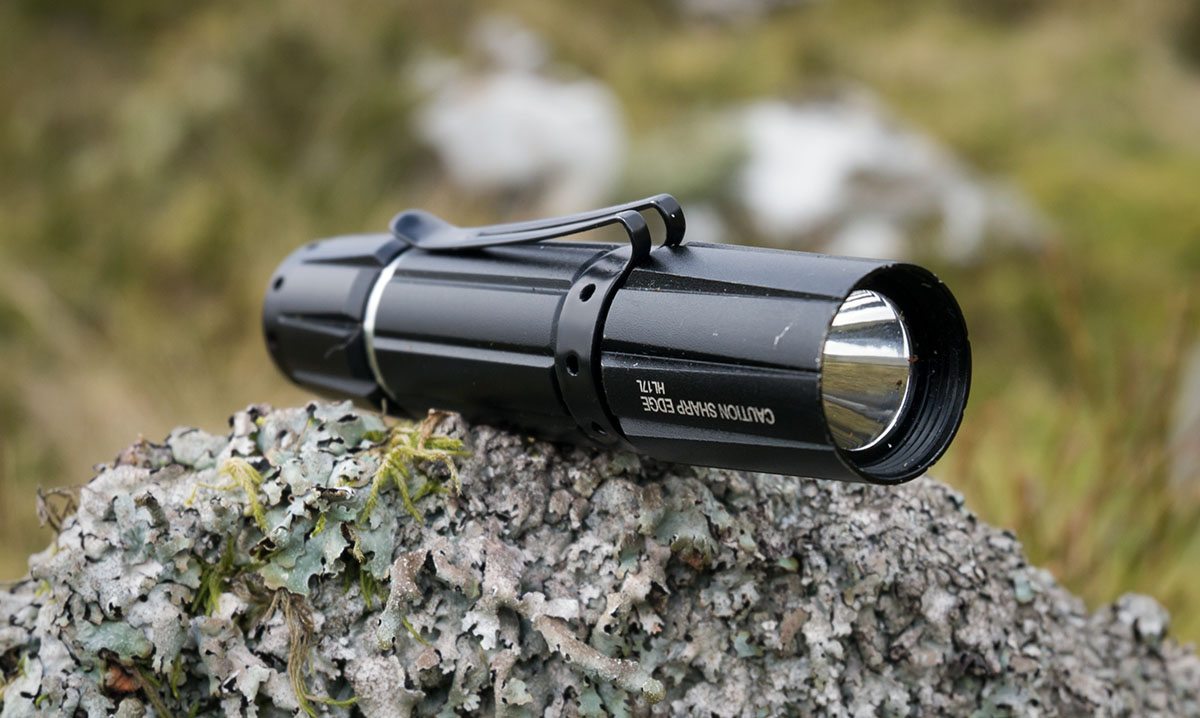This product has been toppled
Click on the image above or here to see its replacement. Please note, this review was part of a much larger overview containing multiple products and you can find its replacement under the heading: "Flashlight (2024 update)".
Datasheet
| Standard (lumens / burn time) | 100 lm / 2 hrs |
| White Strobe (lumens / burn time) | 100 lm / 4.5 hrs |
| Batteries (type x number) | AA x 1 |
| Weight (measured without batteries, 1 x AA = 22g) | 48g |
| Watertightness (weather-resistant) | IPX4 |
| Manufacturer RRP | £9.99 |
Overview
The iProtect 100's LED bulb provides a modest 100 lumens of light but in a tight focused beam which projects up to 80m into the distance. A simple, robust and lightweight flashlight with a single (glow in the dark) on/off button at the back and a deeply recessed LED bulb at the front. It's made of aircraft-grade aluminum and is water-resistant but not fully waterproof (i.e. not submersible).
Out of the box, it comes fitted with a metal thing on the front which is sharp and "tactical" and intended to break / cut things. Remove that and you've got a useful torch. It uses a single AA battery and doesn't have an overly impressive burn time. However, we like this torch, especially for 3-season use when days are longer and the added weight isn't an issue. The beam is impressively long and it's got me out of trouble on a number of occasions where I've needed to get a good sense of where in the hell I am and what kind of trouble I need to navigate myself out of.
The clip is probably the highlight. It's very strong and can be attached to the rim of a cap, to the shoulder staps of a backpack or to a pouch on your pack or hip belt (if you use one) for hands-free use.
The three torches in this section have worked well together in all but low sub-zero temperatures. They compliment each other well and provide a good degree of redundancy for ones lighting setup. For long distance, unsupported, solo trekking this is a very useful feature and one seldom appreciated until batteries drain and/or torches fail.
Finally, to round out this section ...
A Non-Scientific Illustration: 'Used Main Head Torch' vs. 'Fresh Backup Torches'
Perhaps I was bored during this winter's (2020) kit test, but I thought I'd try to illustrate the three torches mentioned in this section and show how the Tikkina fared after 5 nights (4 - 5 hours per day of mixed beam usage) at temperatures between 0 and -5℃. The three battery types are noted at the base of the image.
For the photographers out there, these were shot at 800 ISO, F5.6 with a 4 second exposure. No exposure-based processing has been done, so they accurately reflect what the camera's sensor captured. The camera was on a tripod (position is marked) and the torches were positioned to the left of the camera directed at our mug of choice just 4 meters away.
You can see in the comparison below, where each light was on its max setting, the Tikkina was down to around 10% to 15% of its full brightness (~ 15 to 20 lumens? ... clearly well below the e+Lite's 50 lumen output).
 The Petzl Tikkina head-torch with Energizer NiMH Recharge Extreme AAAs on their last legs
The Petzl Tikkina head-torch with Energizer NiMH Recharge Extreme AAAs on their last legs










